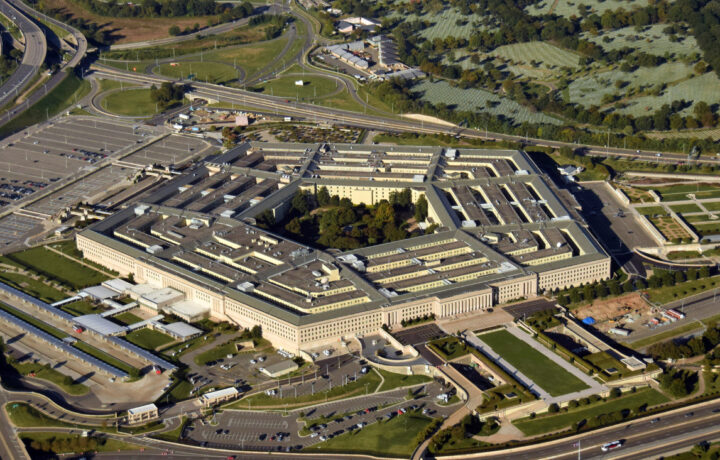There is the concept in the financial world that large banks are so crucial to a nation’s economy that they’re “too big to fail.” The collapse would cause widespread financial instability, resulting in catastrophic economic consequences. By contrast, the concept of “too big to succeed” holds that a program’s size can lead to failure due to a loss of flexibility and innovation.
In the business world, something that is too big to succeed could focus on profit over purpose.
The proposed Golden Dome for America could be such an example of a program too big to succeed, as its purpose might not keep pace with innovation and flexibility.
Golden Doom
Since the Gold Dome was proposed by President Donald Trump soon after he returned to the White House, critics have warned it would be doomed to fail. Its goal of providing a near-perfect national shield would be too big and too complex to succeed.
Chief among the concerns is whether an adversary could overwhelm the system by firing a significant salvo of missiles, decoys, and other aerial threats. To be successful, the system would need a massive amount of interceptors, and even then, it would need to be right every time, whereas an adversary would just need to be lucky once.
Supporters of the Golden Dome, as well as other military experts, have suggested that missile threats, along with drones, continue to multiply. The conflicts in Ukraine and Israel, as well as the border flare-up between India and Pakistan, have highlighted that an effective air defense system can save lives and protect critical infrastructure.
Moreover, the U.S. Navy experienced the threat firsthand in the Middle East, countering the missiles and drones launched by the Iranian-backed Houthis against commercial shipping and its warships.
Of course, even Israel’s Iron Dome, which protects a much smaller area than the Golden Dome would need to cover, isn’t 100% effective. In the October 2024 attacks by Iran, the United States Navy and Jordan also played a role in intercepting the missiles.
Golden Dome Needs The Spotlight
The biggest hurdle for the Golden Dome for America is a need for direction. It was on January 27 that President Trump issued an executive order calling for the creation of an Iron Dome for America. In late May, additional details were provided, including that it was rebranded “Golden Dome.”
On May 27, Secretary Pete Hegseth signed a memorandum establishing the Gold Dome office, and in September, contractors began to be lined up.
Yet, as Tom Karako, the director of the Missile Defense Project at the Center for Strategic and International Studies, wrote in an op-ed for Breaking Defense, a “gag order precludes virtually any discussion of the initiative, even to Congress.” The security and classification guide has not yet been finalized.
It is a program created with the utmost urgency, yet it seems caught in a blackout.
“Executive actions alone cannot legislate, appropriate, or persuade,” Karako warned.
He further said that the Pentagon is “prudent” to keep many key details secret, such as the number of interceptors that could be deployed and other sensitive operational details. But it is a program that can’t move forward in the dark.
“Because the missile threats of today are profound, persuasion should not be that hard. There is a compelling story to be told. Those who can tell the story must be allowed to do so,” Karako concluded.
The Hurdles to Clear
Even once the program does move forward, there may be untold hurdles it will need to clear. Missile technology continues to evolve.
Although intercontinental ballistic missiles (ICBMs) have a relatively straightforward flight path that can be tracked, the same isn’t true of cruise missiles. Hypersonic missiles can combine high speed and in-flight maneuvering, presenting challenges for identifying, tracking, and intercepting.
Loitering munitions and drones offer yet another problem.
What happens if an adversary launches missiles but a drone swarm at multiple parts of the country at the same time?
As Breaking Defense also reported, there is the issue of the “absentee ratio,” the number of interceptors needed to ensure that one is always available to strike a target.
Israel’s Iron Dome can handle that problem because the country is about the size of New Jersey. The United States is much larger, with hundreds of population centers.
This means the Northeast of the United States will need more interceptors as a wave of missiles and drones could target it. But given the size of the country, those interceptors are useless if an attack occurs in Florida, Texas, or California.
Every corner of the country would need to be protected.
Then there is the issue of the number of interceptors needed to be deployed in less populated regions. The Pacific Northwest has fewer people than the East Coast, but it could still face as many threats as the East Coast. It could be cost-prohibitive to have enough anti-missile missiles everywhere.
Space-based interceptors are supposed to address some of the problems.
Golden Dome will also require satellites capable of tracking launches on the far side of the world. But satellites can’t hover in one place, so their movement around the world will affect the surveillance at any given time.
Another consideration will be whether a defensive system built today will be effective against future threats. And finally, there is the issue of ensuring this network is secure against cyberattacks. If the most effective missile defense system is taken offline by a hacker, the whole dome could become worthless.




